Policies help the development of the industry, waste incineration power generation development prospects are broad
Since 2020, the CPC Central Committee, The State Council and various ministries and commissions have issued a series of policies and standards related to the field of sanitation, increasing the importance of garbage classification.
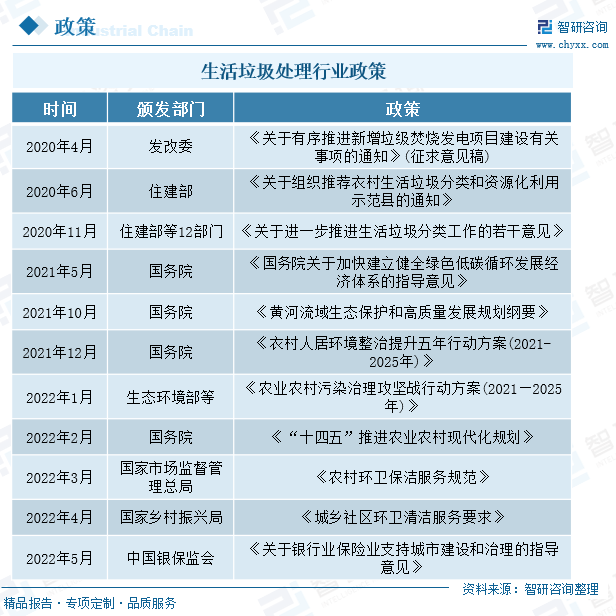
Source: Intellectual Research Consulting
Meanwhile, according to the Ministry of Ecology and Environment's annual report on the prevention and treatment of environmental pollution by solid waste in large and medium cities, the output of urban waste has increased year by year.
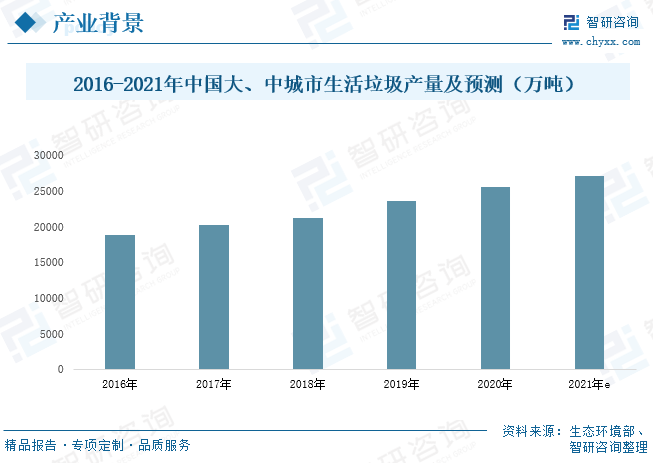
Source: Ministry of Ecology and Environment, Intellectual Research Consulting
The overall volume of household garbage collection and disposal also showed an upward trend, and in 2020, due to the impact of the epidemic, there was a slight decline. In 2021, China's domestic garbage removal volume will be 239.885 million tons, and the domestic garbage disposal volume will be 238.987 million tons. In May 2021, the National Development and Reform Commission issued the "14th Five-Year Plan for the Development of Urban Household Garbage Sorting and Treatment Facilities" to support the construction of cities and towns, and speed up the improvement of domestic garbage collection, transportation and harmless treatment facilities. The rate of harmless treatment capacity of urban solid waste in China is increasing year by year. In 2021, the capacity of harmless treatment of urban solid waste in China will be 994,900 tons/day, and the rate of harmless treatment of urban solid waste will be 99.9%.
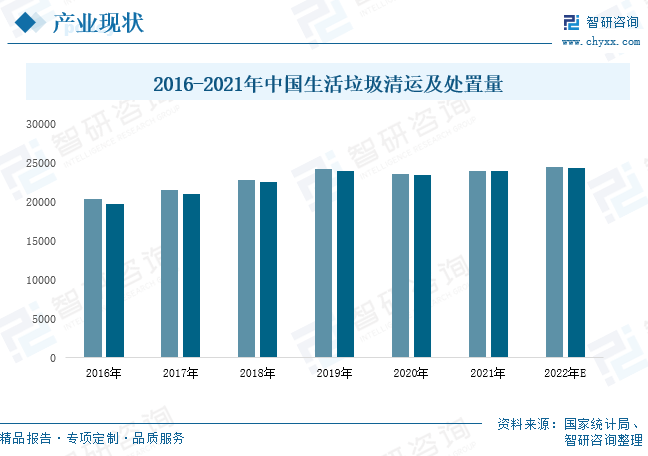
Source: National Bureau of Statistics, Intellectual Research Consulting
The solid waste incineration project belongs to the environmental protection project of waste treatment. The combustible components in the municipal solid waste are burned and reacted with the oxygen in the air to turn them into inorganic substances. The incineration treatment can reduce the capacity by 80%-90%. Incineration method can reduce urban solid waste, harmless, resources, so that the land occupation rate is greatly reduced. Compared with landfills, waste incineration projects have a small footprint. China's waste incineration capacity has been increasing year by year, reaching 773,900 tons per day in 2021.
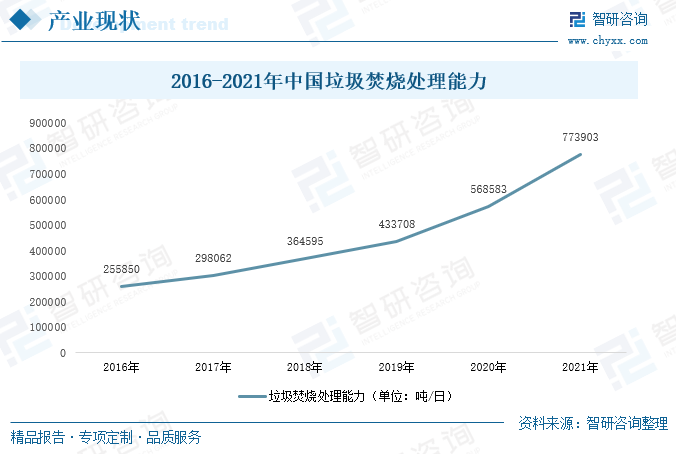
Source: Intellectual Research Consulting
In the context of "carbon peak, carbon neutral", on the one hand, waste incineration has become an important means to solve the "garbage siege" phenomenon. In the past 10 years, China's domestic waste incineration power generation capacity has increased by about 20% every year. As of April 30, 2022, automatic monitoring data from the Ministry of Ecology and Environment shows that the scale of domestic waste incineration power generation has reached 870,000 tons per day. At the beginning of 2021, The State Council issued the Guiding Opinions on Accelerating the Establishment of a Sound Green, Low-carbon and Circular Economic Development System, which pointed out that the construction of urban solid waste treatment facilities should be accelerated, solid waste incineration and power generation should be promoted, and landfill disposal should be reduced. In 2021, the cumulative installed capacity of waste incineration in China was 17.29 million KWH, with 3.9 million KWH added in 2021. Under the dual background of "carbon peak, carbon neutrality" and waste classification, waste incineration power generation can not only realize the harmless treatment of solid waste, but also achieve the goal of green power generation.
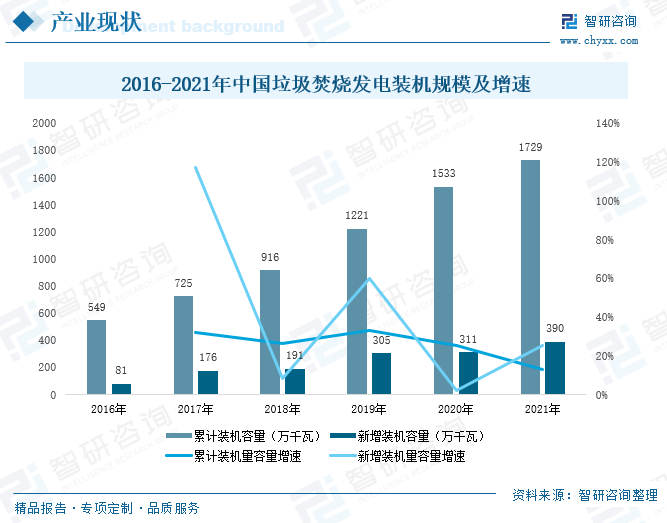
Source: Intellectual Research Consulting
Source: https://mp.weixin.qq.com/s/4U0AncibcQG1VShHwgnJqA
